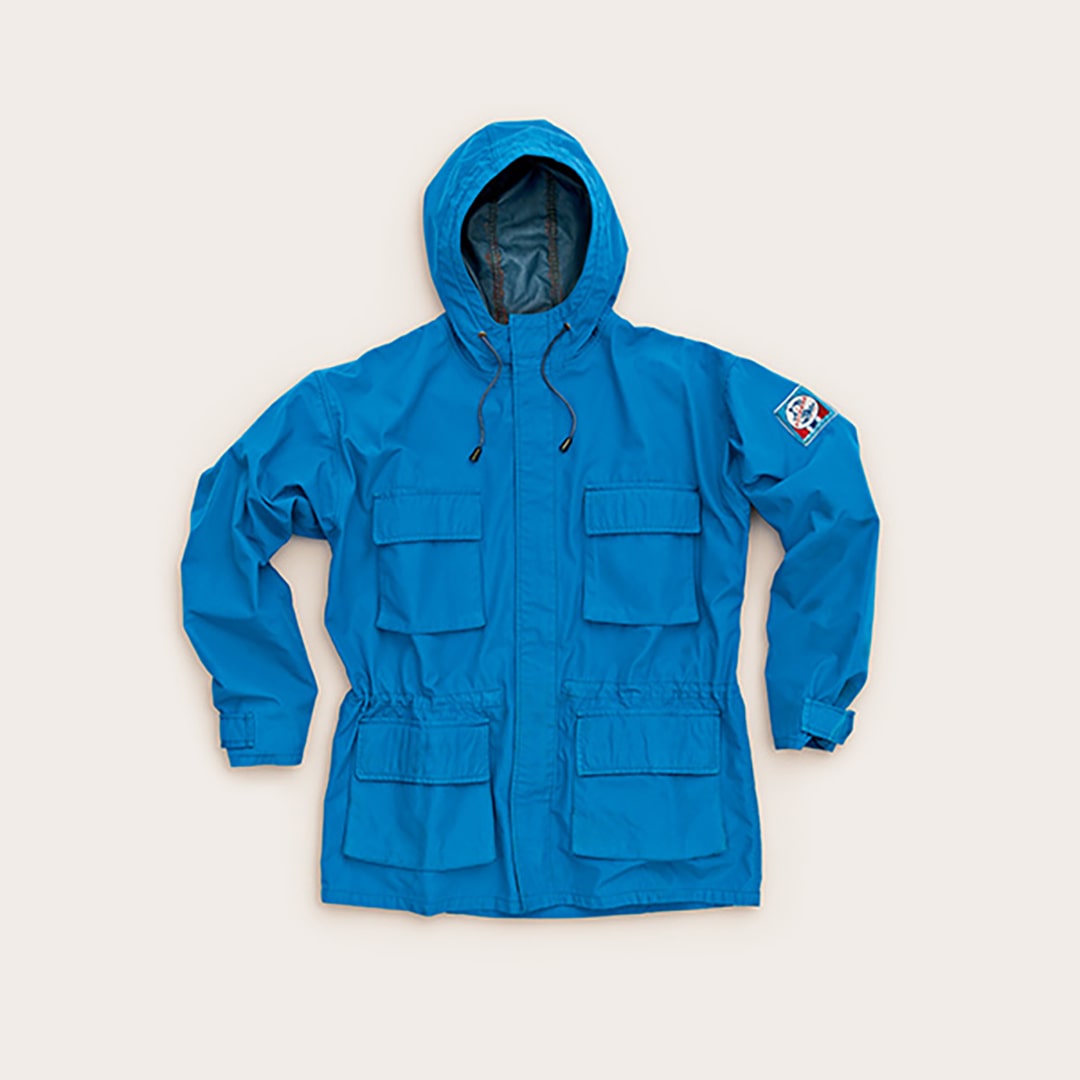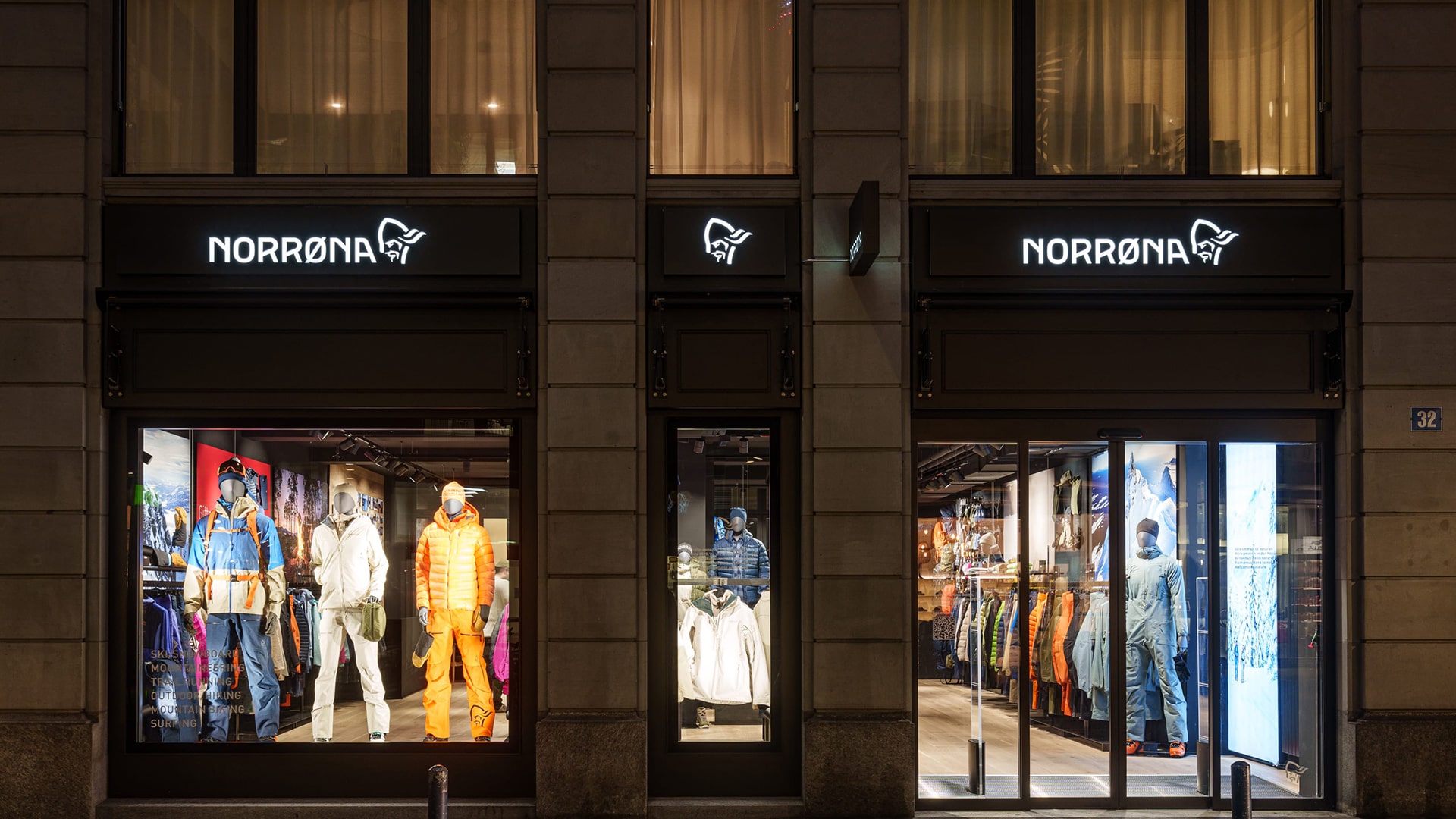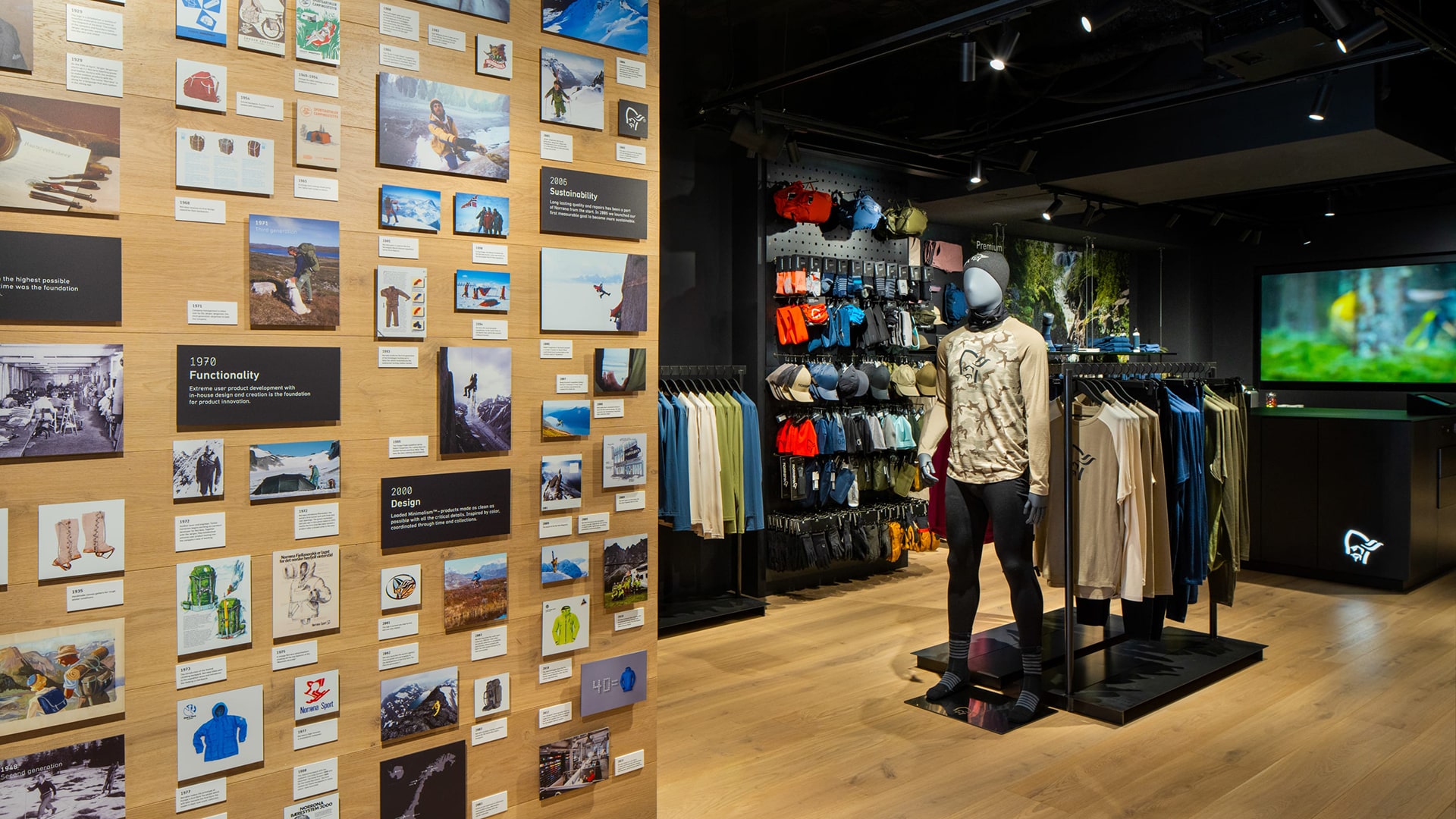When Chinese consumers hear “old man’s head” in their native tongue, they are more likely to think of a local fashion label or elderly streetwear than a premium outdoor gear company.
But that’s the nickname Chinese outdoor enthusiasts and overseas Chinese have given Norrona, a high-end outdoor brand from Norway. The name comes from its logo, which resembles the profile of an elderly man.
Despite its long history, Norrona remains unfamiliar to most Chinese consumers. Its Norwegian name is difficult to pronounce and lacks an official Chinese translation. The brand has yet to open standalone stores or operate a formal online shop in China, limiting its visibility and the development of customer loyalty.
Founded in 1929, Norrona means “from the North” in Norwegian and is considered one of the three major Nordic outdoor brands, alongside Klattermusen and Haglofs. Its origins trace back to Jorgen Jorgensen, who began making durable outdoor gear to withstand Norway’s climate. After an early bankruptcy in 1933, the company resumed operations and gained traction in 1939 during the war between Finland and the Soviet Union, when military supply demand surged.

Norrona was the first outdoor brand in Europe to adopt Gore-Tex. While the material is now standard in high-end outdoor apparel, Norrona placed an order in 1976, just a year after Gore began commercial licensing. The company released its first Gore-Tex hardshell jacket the following year, preceding Arc’teryx by more than two decades.

That shift marked Norrona’s transition from packs and sleeping bags to technical outerwear. The brand expanded its offerings through collaborations with professional adventurers. Today, its product line includes apparel for hiking, trail running, mountaineering, skiing, hunting, and even polar surfing. It has gained a niche following thanks to its functional design, technical materials, and bold colorways.
Now approaching a century in operation, Norrona has grown slowly and strategically. It primarily serves European and North American markets through specialty retailers and maintains just 39 standalone stores globally—roughly one-tenth the store count of Arc’teryx. This restrained growth reflects its family-run legacy, now in its fourth generation.
Norrona is reentering China with a new approach. Rather than relying on multi-brand retailers, it plans to launch flagship stores and establish a direct-to-consumer presence. The brand is partnering with Topsports, a leading domestic sportswear retailer aiming to strengthen its presence in China.

Missing a memorable name
Among China’s outdoor adventuring crowd, there’s ongoing debate over which brand is the most elite. While no official ranking exists, Norrona consistently places near the top in informal discussions, often compared with Arc’teryx.
The comparisons usually focus on two areas: product performance and price.
Norrona has a track record of prioritizing technical innovation. It adopted Gore-Tex earlier than Arc’teryx, developed a proprietary ripstop fabric known as Dynatec, and incorporated PrimaLoft insulation praised for its balance of warmth and water resistance. Dynatec features in its Trollveggen series, designed for extreme mountaineering and built to endure abrasion during glacier expeditions. Norrona has also introduced features such as tunnel tents, backpack monitoring systems, and avalanche safety tech.
Both brands cover a broad price range, though Arc’teryx tends to be more expensive in China due to stronger brand recognition. Norrona’s men’s hardshell jackets retail from EUR 219–1,199 (USD 250–1,367), with the Lofoten series at the top end. Prices are expected to stay consistent in China. Arc’teryx jackets range from USD 99–999 overseas, with limited editions exceeding USD 3,600. In China, they typically sell for RMB 3,000–15,000 (USD 420–2,100), and popular items like the Alpha SV jacket often sell out. Some buyers turn to resale platforms, where prices have surpassed RMB 20,000 (USD 2,800).
Norrona leans into Scandinavian minimalism, combining sleek silhouettes with vibrant colors designed to improve visibility in snowy terrain. Even its more mainstream offerings like the Lofoten line use bold palettes.
Arc’teryx, in contrast, favors muted, nature-inspired tones and emphasizes ergonomic design to support comfort and movement. Some female consumers have described its aesthetic as overly masculine. Ironically, when comparing men’s jackets from both brands, Arc’teryx may be the one that looks more like the “old man’s head.”
Despite its design credentials and technical merit, Norrona remains one of the few outdoor brands with a recognizable nickname but no clear Chinese name, making it harder to build brand identity.
As one industry observer put it, “Chinese outdoor consumers need a badass logo.” That visual identity must be backed by a compelling origin story, the source added. Arc’teryx delivers on that front: its name and logo are derived from the fossil of the Archaeopteryx, the earliest known bird, symbolizing evolutionary progress.
Norrona, for all its heritage, lacks a singular narrative hook. Cold climates and rugged terrain are common to Nordic brands, making its origin story less distinct. The region is also crowded, with competitors like 66North and Helly Hansen already established.

The “Nordic Arc’teryx” needs its own Anta
Arc’teryx’s success in China wouldn’t have been possible without Anta Group. Like most international outdoor brands, Norrona requires a strong local partner to gain traction.
The brand’s first attempt at the China market came in 2016 via Sanfo Outdoor. At its peak, Sanfo represented over 400 brands, including Arc’teryx, The North Face, and labels under Amer Sports. It also distributed names like Haglofs, Mammut, Discovery Expedition, and Klattermusen.
With so many responsibilities, Sanfo didn’t prioritize Norrona. The brand never received a proper Chinese name, and its Western sizing and fit posed challenges for local consumers. Within three years, Norrona exited the market due to low brand awareness and disappointing sales.
By contrast, Arc’teryx gained momentum the following year when Anta acquired its parent company. Anta repositioned Arc’teryx as a premium brand for China’s middle class, opened stores in top-tier locations, implemented a quota-based model to create scarcity, and shifted to direct-to-consumer retail.
The pandemic further accelerated growth in the outdoor segment. Activities like camping, skiing, and hiking became increasingly popular, and Arc’teryx emerged as a market leader. By 2024, the brand reportedly generated USD 2 billion in global revenue.
Chinese consumers are also evolving, moving from buying the most expensive to buying what’s most suitable. Affordable brands like Pelliot and Montbell have gained a following, while Arc’teryx reported no net store expansion in its latest quarter, hinting at a more measured approach to high-end growth in China.
Norrona’s second entry into the market depends on its ability to work more closely with a committed partner. This time, it’s betting on Topsports to oversee brand building, sales, and consumer engagement.
Topsports has shown promise post-pandemic by moving away from its Nike-inspired model and successfully developing brands like Hoka and Kailas. For Norrona, this could mark the beginning of a more sustainable chapter in China.
KrASIA Connection features translated and adapted content that was originally published by 36Kr. This article was written by Peng Qian for 36Kr.

